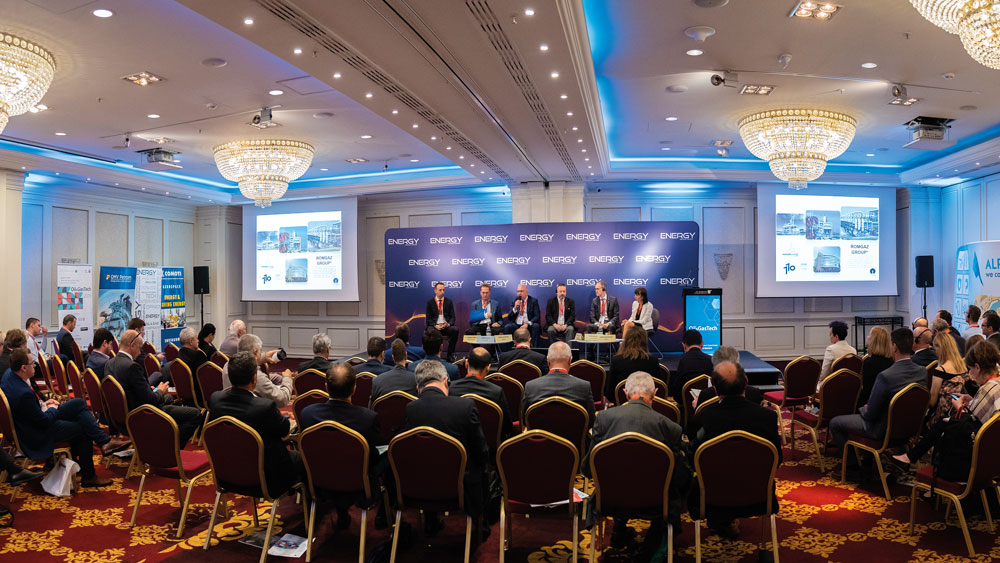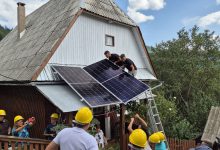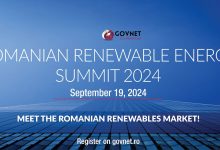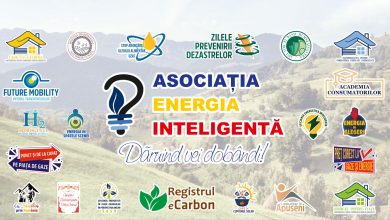Oil and Gas Tech 2019
From field to market
Romania’s leading Oil and Gas event (conference and exhibition), designed for all industry segments, including upstream, midstream, downstream and oilfield services, gathered over 100 CEOs, CFOs, BD, VPs and investors for a full day of behind-closed-doors networking and honest informal discussions.
Oil and Gas Tech 2019 is a communication platform for senior management and top executives working in the energy industry in Romania and not only. With representatives from the entire value chain and an audience made up of over 65% VP level and above, government officials and investors – the event focused on helping operators drive down costs and increase efficiency.
MAJOR THEMES
• Development Update: Changes to the Oil & Gas Industry in the recent years; New fiscal measures and the impact on energy supply, employment and investments; Industry engagement priorities for 2019 and beyond
• New Technology: Impact of science-technology-innovation on competitiveness and economic growth; Upgrading the resources through technology, productivity and exploration success; Striving to improve performance as technology and innovation evolve by continuously working with regulators, government and stakeholders; Smart energy transmission systems
• Data and Digital: Digital transformation – Key driver shaping an efficient, reliable and sustainable future; Improving oil and gas efficiency through digital transformation; maximizing value from digital investments
• Industry Trends and Best Practices: Struggling to keep up as oil prices stay low; Identification, understanding and implementation of trendsetting solutions; Biggest challenges while unlocking the most innovative technologies; Following and learning from domestic and international experiences in the energy efficiency area
• Health and Safety: Balancing risks and profitableness across the industry; Improving work place health and safety; Next steps towards climate friendly-energy;
2018 was a year of quick succeeding events, the focus being on the major energy transition. In terms of climate, the tone has been set by the Integrated Pollution Prevention and Control, IPPC, which requested the shift from a target of 2 degrees Celsius to 1.5 degrees Celsius, in the context in which geopolitics and policies on global trade, more strained, have been against accelerating the downward progress. Oil has again witnessed an increase in volatility, partly driven by the same amplified tensions within geopolitics.
However, oil and gas continue to play a pivotal role in the world’s energy to meet growing demands for heat, power and transport. The Oil & Gas Industry is in an era of Digital Revolution and embracing digital technologies to solve complex business challenges like real time insights on production operations & predicting the failure of assets.
In Romania, oil production is following a downward trend, with a reserve replacement ratio below par, due to a high depletion of fields, according to the draft Energy Strategy, published on the website of the Ministry of Energy. It is estimated that oil production will continue its trend of slow decline between 2030 and 2050, from 22 to 13 TWh (1.93 to 1.15 million toe).
The same document shows that Romania’s gas reserves will be exhausted in the following 14 years, and exploitation of Black Sea fields is a condition sine-qua-non to continue to rely on this resource in the energy mix of the country.
Increasing the degree of recovery is possible, but investment efforts, which are not negligible, require packages of stimulating economic and fiscal measures. Responsible policies can encourage the responsible development of resources needed.
Working Together to Efficiently Produce Oil and Gas
High-level officials and experts opened dialogue on RESPONSIBLE POLICIES & REGULATIONS TO ENCOURAGE RESPONSIBLE DEVELOPMENT OF RESOURCES, showing that a common effort is needed to surmount major challenges and legislative barriers within the industry.
How will oil & gas companies act through the uncertainty remains the main question that every person should seek an answer to. Policies to attract foreign investments, shaping the regulatory framework and the industry impediments and opportunities in Romania, energy transition were also key topics of the conference.
“So far, at international level, when energy security was under discussion, the focus was rather on the security of energy supply and energy transit. Turmoil on the oil market, at the beginning of 2015, has caused numerous budget cuts or restrictions of activities among companies in the oil industry, a trend that has proven not to be a productive solution in the long run. The year 2018 has embarked on an even more complex context in the energy sector, imposed by the political leaders’ commitments at the Paris Climate Conference, a context that favours the global energy transition to low-carbon economies. In the new international framework, in order to achieve the targets in the field of energy and climate, there is a need in particular for the profound transformation of the energy systems and increasing their flexibility, for a new market structure, as well as for international cooperation and coordination in the field of energy policies,” the representative of the Ministry of Energy – Cristian-Florin Gheorghe, Director General of the Oil and Gas Directorate, highlighted.
“The effects of the economic crisis were felt at the level of the oil and gas industry in Romania, as in most countries, through a decrease in consumption, in the financial liquidity level, as well as through difficulties in attracting the funds necessary for new investment objectives. Oil prices register again downward trends, amid turmoil in the global energy landscape. As it is normal, we want the national energy sector to grow and we want Romania to be an important energy actor at regional level. I assure you that we are permanently concerned to establish an effective and sustainable regulatory framework, able to ensure a fair distribution of benefits between state and investors, which contributes to establishing a long-term partnership between the two sides, as well as to consolidating trust in the perspectives of the national economy,” the representative of the Ministry of Energy also mentioned.
“Romania is currently the only significant hydrocarbon producer in South-Eastern Europe. Romania’s transmission infrastructure can contribute to gas transit from the Caspian region, Middle East or Eastern Mediterranean to the European market. The extremely varied energy mix allows Romania to have a high level of energy security, compared to the other states in the region. The question that is more and more asked in the regional circles is the following: can Romania reach its potential of becoming an energy hub and important energy bridge to the EU market? The answer is undoubtedly yes! I have also heard voices talking about political and regulatory uncertainty, about an inadequate behaviour leading to blocking an integrated market at regional level. I believe we have already proven that we need a long-term vision on how to capitalize on energy resources and integrate the national market into the regional energy market. But we shouldn’t forget that energy projects, especially the large-scale ones, need major investments and this is why I want to emphasize that Romania wants to show investors in the energy sector that it has significant investment opportunities. Romania is a country with an attractive energy potential, with significant growth opportunities, where investment can be turned into successful projects,” Florin Gheorghe concluded.
Dialogue continued with the intervention of the representative of the Romanian Energy Regulatory Authority (ANRE) – Zoltan Nagy – Vice-President, who reviewed the latest developments in the domestic gas market, the status of alignment with European standards, and the chapters where Romania still has shortcomings. A hot topic, which was not bypassed by ANRE representative, was GEO 114/2018, as well as its dramatic impact on the gas sector in Romania. Joining the debate were also the representatives of associations in the field – FPPG (Oil and Gas Employers’ Federation) and ROPEPCA (Romanian Petroleum Exploration and Production Companies Association). Both Catalin Nita – Executive Director of FPPG, and Saniya Melnicenco – President of ROPEPCA, brought to discussion the problems currently faced by the oil and gas sector in absence of a stable and predictable fiscal framework. Moreover, they recalled an older stringent issue, that of the lack of qualified labour force in the oil and gas industry, which was also the point of view of the Prorector of the Petroleum-Gas University of Ploiesti, Mihail Minescu.
Major Players on Maximizing Return on Investment with the Lightest, Safest and Smallest Operational Footprint
Some of the highlights from the first technical session of the event, moderated by ROPEPCA’s President Saniya Melnicenco, included discussion on increasing production and replacing consumed reserves with new ones; mature fields management – tackling production decline, complex surface constraints, decreasing reserves; advanced technology to maximize oil and gas recovery; drilling and completion technology innovations; state-of-the art natural gas recovery and compression equipment.
The most important players in the oil and gas sector presented their latest products, technologies, strategies for the future, development directions.
Romgaz, the major producer and supplier of natural gas in Romania, celebrates this year 110 years of history of the gas industry. Romgaz group is also Romania’s largest operator of underground gas storage facilities. Adrian Volintiru, CEO, highlighted the most important milestones on Romgaz’s path from a local company to an international one, which is today among the top European companies. He also reviewed the main areas of interest, the results obtained and the development directions of the company for the following period. “Romgaz has the potential and ambition to consolidate and develop its position as one of the most important natural gas companies in Romania and become a leading player on important Central and Eastern European markets by means of an efficient and competitive production, able to face the increasing pressure exercised by regional and international companies,” he stated. “Romgaz monitors with great interest the routes of gas pipelines, while aiming to increase storage capacities. We plan to increase and upgrade the storage capacities – Ghercesti (on BRUA route) and Sarmasel (on Eastring route). Romgaz plans to modernize communications and quickly adapts to market conditions,” Adrian Volintiru also mentioned.
OMV Petrom is the largest energy company in Southern and Eastern Europe, with an annual Group hydrocarbon production of 58.3 million boe in 2018. The Group has a refining capacity of 4.5 million tons per year and operates an 860 MW high efficiency power plant. OMV Petrom is present on the oil products retail market in Romania and in the neighbouring countries through 792 filling stations, at the end of March 2019, under two brands – OMV and Petrom. The company is active on every aspect of the energy value chain: from wells, producing oil and gas, to refining and fuels distribution, gas supply and power generation & supply.
During his presentation, Peter Zeilinger – Member of the Executive Board responsible for Upstream, insisted on technologies used in OMV Petrom Upstream. He referred to the multilateral horizontal well – LVO7 (Lebada Vest field), the first multilateral well drilled in Romania; optimization of production from mature fields using water & polymer injection; lined tubbing, casing while drilling (a technology implemented in New Zealand, Austria and Romania with great with success) & heavy oil recovery. He also underlined that Romania set the world record for 20” casing section (503 m) and European record for 13 3/8” casing section (729 m) in 2013. As for the heavy oil recovery, the world’s longest lasting in-situ combustion project is performed by OMV (50 years of production). Applied in Suplacu oil field, the reported recovery factor up to date was 55%.
Comoti Turbine Engines Research and Development Institute is the only unit in Romania specialized in development and integration of scientific research, constructive and technological design, manufacturing, experimentation, testing, technological transfer and innovation in the field of aviation turbine engines, gas turbine industrial machines and high-speed blade machines. The representative of the institution, Leonard Trifu – Marketing Manager, mentioned the portfolio of activities, capabilities, major projects, the main partners of the company, as well as several applications of equipment dedicated to the oil and gas industry. In terms of energy and energy saving, the focus falls on the development of Romanian industrial gas turbines (1.5-5.4 MW); high-efficient generation of electric and thermal power with gas turbines (CHP); high-efficient centrifugal and screw compressors for air and natural gas; renewable energy (biomass gasification for industrial gas turbines, wind turbines, bio-fuels). The series of equipment for the natural gas sector includes: screw compressors CLP64, CLP90, CMP128; screw compressors high pressure CHP128, CHP200, CHP220; expander – electric generator; centrifugal oil-free compressors for air and gas (EGC and CCAE).
As a distributor and authorized packager for ARIEL Corporation, Euro Gas Systems (EGS) brings world-class compression to the European, Middle East, North Africa and CIS markets. As areas of activity, EGS covers the entire value chain, providing packaged gas compressors, reciprocating compressor packages, screw compressor packages.
EGS’ main focus is the upstream industry, but the company serves, with few limitations, the midstream and downstream industries as well. EGS equipment solution is based on reciprocating and screw compressor technology with capabilities of packaging gas compressors up to 5,000 HP both engine or electric driven from basic manual operation to full automation using the most advance technologies in the field. In terms of production capabilities, EGS operates 2 workshops summing up approximately 4,000 sqm of assembly floor, 4 x 50 tone cranes, 2 x 12,5 tone ones and 6 x 10 ones, 3 paint booths, shop blast booth, NDT Lab etc. In terms of designing capability, everything that is built at EGS is modelled in a 3D environment by a team of highly experienced package engineers, in this way giving them the possibility to be very flexible in terms of adapting to any customer specs and nevertheless improving or upgrading these specs when required.
The presentation of Claudiu Orban – Sales Manager EGS, focused on the marginal wells concept. Starting from the explanation of the term, familiar to most of those present, he emphasized the importance of wellhead compression. Lowering the surface pressure of a well by using compression will generally result in: more production, prolonged well life, increased reserves, he recalled. Claudiu Orban supported his statements with relevant case studies.
Exploring with the archive ahead of the drill bit – How legacy geoscientific data can be used to identify new opportunities in both conventional and unconventional reservoirs was the topic of Christopher Hughes – Multi-client Studies Manager, Xodus Group, presentation. He explained the secret of the success behind the U.S. shale play revolution. There are over two million publicly-accessible well datasets in continental United States. These wells have been drilled and their data were acquired over 150 years of hydrocarbon exploration and production history. Data acquired over this period were predominantly for conventional E&P activities. New analysis techniques and reassessment of legacy data have revealed missed and new opportunities. All major shale basins were defined by older wells before being proven with new drilling. This has given birth to the unconventional business that the rest of the world is now following. All these have been achieved through critical information and critical processes. Using sophisticated technology from specialist data management contractors, accurate inventories of both structured and unstructured data can be created, said Christopher Hughes. Full content searches of scanned images & digital data using crawling techniques and search criteria can pull out complex information. In addition to the application of new interpretation and analysis to legacy datasets using manual methods, significant success is now being achieved using machine learning and artificial intelligence processes from contractors like Quantico and PetroScale, he added. The presentation was completed with some examples of where the same approach has been successfully applied to determine missed hydrocarbon opportunities and unconventional play potential and an example of where the approach won’t work.
Securing Romania’s Energy Future – Connecting Fields to Market
The third session of the event, moderated by Energy Expert Ionut Purica, brought to the attention another hot topic: Romania’s energy future.
Romania could sustainably benefit from a competitive gas market – is the point of view of Franck Neel – Member of the Executive Board responsible for Downstream Gas, OMV Petrom. Romania has the highest growth potential in the regional gas market, he stated. Within the region, Romania has the largest share of domestic gas in consumption. Also, domestic gas production is a huge strength. Still, committed infrastructure developments are needed. The horizon for reserve depletion is estimated at 15 – 20 years, so reserve replacement requires large scale & long cycle investments.
According to EFET (European Federation of Energy Traders) and OIES (Oxford Institute for Energy Studies) studies, the European gas hubs have reached different development stages. Several Western and Central European countries have taken significant steps towards the development of their wholesale gas markets while South-Eastern European markets are in an early stage of development. Compared to the neighbouring countries, the Romanian wholesale market is still in a very early stage of development. The volumes traded on the Romanian day-ahead market are still low compared to neighbouring hubs. The currently applicable Centralized Market Obligation (CMO) is not fully adapted to improve market liquidity. However, the new regulatory environment is impeding the emergence of competitive and well-functioning markets, leaving Romania vulnerable to any disruption of Russian gas flows through Ukraine. Romania is dependent on gas imports during peak demand periods and also vulnerable to potential disruptions of Russian gas imports. Conclusions show that in order to get back on track, Romanian gas market needs stable investment framework, infrastructure development acceleration, economically driven functionalities.
Delivering Romania’s transport of crude oil and rich gas needs was the theme of Conpet’s presentation. Conpet operates the crude oil National Transport System (SNTT), a very complex transport system via pipelines and by rail tanks comprising facilities related to the oil and gas industry.
Timur Chis – General Manager, defined the elements of company’s development strategy for the following period, as well as the main directions of the investment program. The multiannual investments program is extremely ambitious and mainly includes the following objectives: pipeline replacements; safe disposal works on the pipelines; rehabilitation of the pipelines undercrossing the Danube and Borcea Arm; continuation of the program for the modernization and monitoring of the cathodic protection system related to pipelines and tanks; implementation of a system for detection and location of crude oil leaks (losses); modernization and replacement of several tanks; ongoing modernization of the systems for the monitoring and security of pumping stations; continuation of the projects for the modernization of pumping stations; continuation of the activity related to the modernization of logistics with state-of-the-art specific machinery and equipment; implementation of the geographic information system – G.I.S.; continuation of the project started in 2017, related to SCADA optimization and upgrade of hardware and software of the data transmission and automation system used in Conpet; continuation of the projects related to the modernization of the rail loading/unloading ramps and related infrastructure; replacement of the shunting locomotives and procurement of new tank-cars for crude oil transport; continuation of the rehabilitation and modernization of Conpet head office and secondary establishments.
Completing the presentation supported by Franck Neel was the study conducted by Emerton, having as topic ‘Recommendations for a competitive, attractive and affordable Romanian gas market’. Sébastien Zimmer – Partner, Emerton, has synthesized in his presentation a series of hurdles on the value chain impeding the well-functioning of the Romanian gas market, such as: lack of investment opportunities in the upstream sector; limited interconnections with EU gas markets limiting the option to access more competitive prices; the centralized market obligations (CMO) proving not efficient in enhancing the liquidity of the wholesale market; heavy penalties applied for each non-compliance with the Romanian regulatory framework, undermining the attractiveness of the gas sector. Furthermore, the RON 68/MWh cap undermines the efforts made towards market liberalization and threatens the security of supply in the long run, Sébastien Zimmer highlighted. Also, the Emergency Ordinance 114/2018 does not fix the dysfunctions of the Romanian market at their roots; it is expected to amplify their side effects and seriously threaten the security of supply in the long term, he added. A comprehensive roadmap was proposed to mitigate these hurdles and develop a competitive, attractive and affordable gas market in Romania. The roadmap recommends combining at least 2 complementary indicators in the definition of energy poverty, in order to increase the number of beneficiaries. Using these 2 indicators, energy aids would cover around 20% of the Romanian population, and the income from the windfall tax applied to gas producers would be able to provide a robust protection to vulnerable consumers, the study reveals. The roadmap includes several actions aiming at boosting the liquidity of the wholesale market and improving the security of supply. The roadmap also aims at enhancing the competitive intensity of the retail market to the benefit of end-users.
The idea was continued by Radu Dudau – Director, Energy Policy Group, who focused on the long-term prospects of natural gas in the EU: 2050. The analyst presented a prospect on the gas sector towards 2050, which included natural gas consumption in the EU; projections of gas demand: 2030 and 2050; long-term strategy of the EU; projections for hydrogen and renewable gas production.
Daniel Vlasceanu – Partner, Vlasceanu, Ene & Partners, resumed the topic of GEO 114/2018, dealing in his presentation with its amendments and impact on the energy sector. The expert analysed, from a legal point of view, the amendments brought by GEO 19/2019 and its consequences on the industry.
The conclusions were very clear. Romania should capitalize on its favourable conditions: highly skilled work force; available data and well-known geology; long-term and established tradition. Romania needs to build TRUST in order to attract investments.
Adapting to The New Energy Age – Best Practices, Processes and Procedures
The session that ended the Oil and Gas Tech 2019 conference focused on best practices, processes and procedures within the oil and gas industry. The main directions and objectives highlighted referred to low emissions technologies; optimization of plant operations and maintenance; alignment to the Best Available Technologies standards and European environmental regulations; modernization programs to meet growing demand for high-quality fuels; new initiatives to drive digitization for the oil and gas value supply chain; improving safety, efficiency and profitability with big data analytics capabilities.
BrandSafway is a leading global provider of access, specialized services, and forming and shoring solutions to the industrial, commercial and infrastructure end-markets. “At BrandSafway, environmental health and safety (EHS) is our foremost value. It’s a basic right that we owe to our employees, customers and everyone we interact with,” said Catalin Musuroi – Director Industrial Services, Hunnebeck Romania. He mentioned some of good practices implemented within the group, global capabilities, the range of access solutions and services (insulation, coating, in-house specialist services). It’s worth mentioning that the group has an international service capacity of 8,800 employees.
A different approach – Beyond risk was proposed by Radu Mircescu – General Manager, Downhole Wellsolutions. For Downhole Wellsolutions, risk is a partner, says Radu Mircescu. He believes risk is a key-element to be used in designing and protecting the present and the future. “Downhole Wellsolutions is not different due to its philosophy, but due to its team, certifications and capabilities. The DHWS team consists of renowned people from universities, as well as highly skilled and experienced engineers,” the manager explained. According to statistics, today, with a focus on new technologies and equipment, the cause of incidents is in around 90% cases human error. Thus, there is a great need for the industry: a code of best practices. “Together with all decision-makers in E&P companies in Romania and with the support of the responsible state authorities, we want to promote this code. Codes of best practice, once adopted, tested and mostly trained and simulated in real conditions, make this rate drop,” Radu Mircescu stated.
The importance of a strictly applied regulatory framework as a key-factor for improving the level of safety of Black Sea Offshore Petroleum Operations was highlighted by Constantin Gheorghe – President, Competent Regulatory Authority for the Black Sea Petroleum Offshore Operations (ACROPO). ACROPO is a new institution established following the official release of the Offshore Safety Directive, implemented by Law 165/2016. The level of the regulatory framework, both in quality and exigency, is quite high, very close to the one developed by other similar authorities in Europe, having a longer history (UK, Norway, Denmark). This has been recognized and well received on several occasions by all the European regulatory authorities, Constantin Gheorghe mentioned. The national legislation applicable to the offshore oil & gas operations was not at the required level and this is why, in developing the regulatory framework, ACROPO used guidelines of best practice, international applicable standards, common web-based platforms for sharing the expertise, used by all the European regulatory authorities, and also the expertise of own specialists, he added. Since mid-last year ACROPO has evaluated a number of 31 documents sent by the operators and rig owners, with a total volume of 5372 man-hours. 10 inspections at the offshore installations (8 productive and 2 non-productive) have also been completed. Currently, ACROPO is preparing for the deep-water projects (expecting to have at least one this year) and for a project quite new: the decommissioning of a productive installation. Constantin Gheorghe also underlined the support the authority had received from all the operators and rig owners, who have understood that working together will help reaching the final target: to preserve the health and safety of both people and environment.
About Ragsol’s integrated approach for smart brownfield concept we have heard from David Doppelreiter – Managing Director Oil & Gas Field Solutions. Ragsol offers a novel approach for oil field digitization from an operator’s perspective in view of big data and industry 4.0 topics. For Ragsol smart means: low cost; retrofit; easy usability; holistic approach; improving the work flow; increasing workers safety. The objective is to effect a smart technology change to state-of-the-art conditions in mature brownfields assuming low oil prices, minor hydrocarbon production rates, high water cuts and the availability of a certain percentage of a well’s turnover for digitization and monitoring purposes, as required by the company’s management.
Ragsol’s smart brownfield concept is based on a team of multidisciplinary professionals working on projects with the aim of introducing and implementing state-of-the-art technology solutions, in order to optimize production in mature brownfields. The project team consists of three main pillars to cover key organizational, commercial and technical key aspects. Additionally, Ragsol focuses on the individual skills of each team member, which are essential for the successful implementation of the defined objectives.
The session ended with the presentation of Andrei Ceclan – Energy Adviser, Servelect – High efficiency energy conversion in Oil & Gas, from opportunity cost to real business.
With over 13 years of experience, Servelect offers integrated services and solutions to optimize energy consumption and reduce operational costs across the entire value chain of the oil and gas industry (upstream, midstream, downstream) and not only. For the upstream segment, Servelect focuses on: integrated air & steam & power generation; ORC on G2P; waste heat recovery; flare and associated gases; adaptive pumping; aggregation and demand response; tax deduction on power losses. Some examples of offshore and onshore turbine applications were also mentioned, as well as expander turbines. Midstream applications include transmission, storage, metering, processing, cathodic protection. As for the downstream segment, Servelect is entitled to provide solutions for power & steam generation, waste heat recovery – pinch, smart cooling, ORC electricity, adaptive pumping, flexible energy forecast. Downstream applications solutions also refer to: providing utilities & gasoline; CNG; electric chargers; heat pumps in HVAC & refrigeration; μCHP for power supply; PV local generation; aggregation and demand response.
Oil and Gas Tech 2019 in brief
Oil and Gas Tech 2019 a meeting place for the oil and gas professionals to share their breakthrough technologies, expertise, solutions, best practices and the latest developments of the sector from field to market – also provided a broad range of networking opportunities.
Exhibitors benefitted from the chance to display their products and present in depth their services to a highly engaged audience. The conference hall and the exhibition space directly facilitated value-based discussions between presenters, exhibitors and attendees in an amiable and engaging atmosphere.
Click on the below image to see the event gallery!








